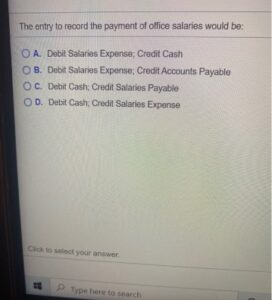
The issue is that an invoice recorded in one subsidiary’s Accounts Receivable (AR) is frequently not recorded in the payer’s Accounts Payable (AP) on time, correctly, or at all. It results in significant discrepancies, which generate issues in the consolidated accounting. With a single solution to help manage intercompany reconciliation, you can make sure that all documentation is centralized and accessible to those who need it.

What are the challenges and problems with Intercompany Reconciliation?
This way, you always have access to real-time data and never have to worry about manual errors creeping into your consolidated financial statements. A complete solution built to streamline your faith-based organizations’ financial management and accounting processes. Intercompany reconciliation is an essential step for companies with subsidiaries. Its primary aim is to accurately account for all transactions and adjust accounts according to intercompany accounting rules. The former approach requires the administrator to identify IC relationships in each entity structure vs. setting this up and managing it in one place. The risk of this approach is that it requires the administrator to ensure the data which has been loaded multiple times is the same each time it is loaded.
Learn how you can avoid and overcome the biggest challenges facing CFOs who want to automate. Essentially, the goal is what is ifrs and why is it important to remove this type of revenue and costs from statements because it all falls under the same company. Accelerate payment recovery from delinquent customers and boost cash flow through automated collection workflows. They will also include references to other relevant information, such as currency rates, payment amount, and the nature of the transaction. In addition to creating an operational drag, this delay also means that executives won’t have accurate data for decision-making, leading to poor investment decisions. Get greater visibility into your investment data and harness opportunities as they arise with SoftLedger’s sophisticated features.
How does Intercompany Reconciliation work?
The use of consolidation hierarchies, however, makes the system easier to configure and maintain for both single and multiple consolidation hierarchies. Even though manual reconciliation is possible, it’s time-consuming and prone to errors, particularly as the pressure mounts towards month-end. This makes accounting management more straightforward and less time-consuming. This is important because it ensures there aren’t any discrepancies in the data and helps avoid double entries across multiple subsidiaries. Get our easy-to-use SaaS accounting software and significantly decrease your time spent on operations. SoftLedger’s venture capital accounting software is feature-rich to support all your consolidation needs.
Intercompany accounting operates on the principle that only transactions with outside entities average collection period can create a profit or a liability. Therefore, all intercompany transactions must cancel out to zero in the business accounting records. Intercompany transactions are an important step in the business accounting process. They allow the business to record and evaluate all manner of financial activity thoroughly and accurately. Finally, the business will benefit from having a centralized means of reconciling all intercompany transactions once they have been gathered. To do this properly, all journal entries that involve an intercompany transaction should use a standard means of identification and data entry.
- Timing differences in transaction recording can create significant challenges in intercompany accounting.
- A full-featured financial services accounting software letting you easily handle multiple entities.
- An intercompany payable is when a subsidiary in your company owes a payment (like a credit, loan, or advance) to another subsidiary in the parent company.
- By using the same accounting methods across all divisions, you make sure those puzzle pieces fit, making the reconciliation process smoother and more reliable.
- BUt, tracking transactions continuously will actually end up alleviating the burden of having to deal with so much at once.
- Automation solutions also pull data from different systems so that everything can be addressed in a central location.
Automate
Systems that calculate and consolidate data only when reports are run are less trusted by auditors since the numbers can change and there is no record of what the number was previously. It is the type of intercompany transaction that takes place between two subsidiaries within the same parent organization. Here both subsidiaries are responsible for recording any lateral transaction along with recognizing the resulting profit or pro forma earnings definition loss. An example of lateral intercompany transactions is when one subsidiary provides IT services to another in exchange for a fee.
Schedule a demo with us and we will show you how to eliminate the biggest bottleneck and risk to a fast, accurate global financial close with an integrated intercompany accounting process. Intercompany reconciliation allows a business to maintain the same level of accuracy for its intercompany transactions that it does for all other forms of financial activity. Intercompany reconciliation faces several challenges because of the nature of the transactions that are being reconciled. These may include poor record keeping, such as invoicing errors and inconsistent account period recording. To solve this problem, we built SoftLedger, which automates the intercompany reconciliation process. As you can see, manually consolidating entries is time-consuming and can slow down your monthly close process.
This lack of transparency can lead to errors, missed deadlines, and inefficiencies in intercompany reconciliation. It becomes difficult to track the flow of funds, inventory, and services, resulting in discrepancies between entities. Implementing a centralized platform or system for intercompany accounting can improve visibility, streamline reconciliation, enhance decision-making, and ensure accurate timely financial reporting.
If it’s not feasible to fully align periods, establish clear guidelines on how to handle timing discrepancies to ensure accurate and consistent financial reporting. Here the parent company is responsible for tracking and recording all the transactions. An example of downstream transactions is selling assets by the parent company to a subsidiary. Regulations, laws, and accounting standards are always evolving, and companies have to scramble to keep up.

